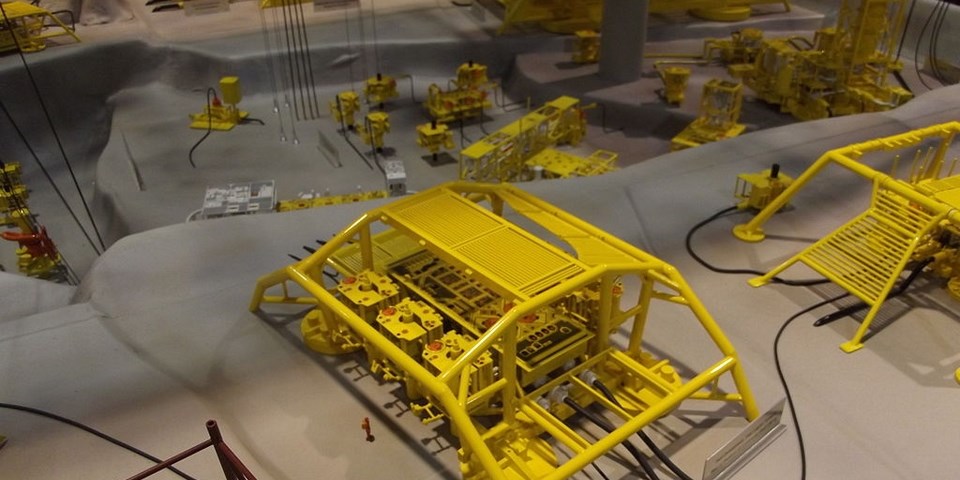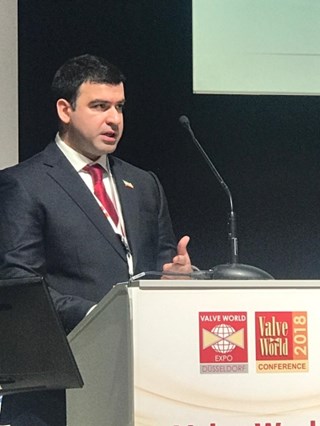On the first of April Karan Sotoodeh was officially employed as a Senior Engineer by Baker Hughes, which is a part of GE and known as a fullstream provider of integrated oilfield products, services and digital solutions. In his new position Karan will continue to focus very much on valves, but with additional responsibilities for personnel leadership in addition to technical responsibilities. This is a challenge he is very much looking forward to.
Karan Sotoodeh set to go subsea
The name of Karan Sotoodeh will be familiar to all in the Valve World community as he has been a longstanding and valued contributor to our magazine and conferences. Hearing rumours of changes afoot, Valve World therefore decided to ask Karan for a quick update on his future plans.
…Main image courtesy: Jason Woodhead, posted on Flickr, sourced on Wikimedia Commons…
“I have been in my current job for some seven years and in that time have learnt a tremendous amount about valves used topsides. It was an excellent posting but I felt it was time for a new challenge. I was therefore delighted when Baker Hughes offered me a job as a valve specialist in the subsea arena. I am looking forward to discovering new technologies and also the opportunity to work more in management as well.”
Asked about the differences between valves used topsides and those required for subsea applications, Karan states that there are both quantitative as well as qualitative aspects. “Looking first at the numbers I can say that a standard typical topside project could involve from 6000 to 10,000 valves whereas a subsea project might require say 150 or 200 valves. However, whilst the number of valves might be significantly smaller, the technical challenges and discussions will be far more complex. Once these valves have been installed then intervention becomes practically impossible so attention to quality becomes tremendously important.”
This new role will also give Karan more opportunity to further develop his expertise with actuators. “I have gained a reasonable understanding of actuators thanks to having worked alongside instrumentation engineers but don’t yet have much direct experience. So this is another area where I am keen to widen my own skill-set.”
Thirst for knowledge
Since gaining his Bachelor’s degree in industrial engineering in 2002 Karan has in fact continued to widen his practical and theoretical knowledge whenever possible. This passion for learning has seen him gain a Master’s degree in oil and gas engineering in 2009 and to follow that up with a second Master’s degree in mechanical engineering in 2017. “I have always enjoyed learning and especially doing so with the academic environment,” says Karan.
And Karan is clearly adept at multi-tasking as he successfully held down a full-time job whilst studying for these two Master’s degrees. “My first job saw me working as a planning engineer for a little over a year and a half. Since then however my main focus has been with valves and in fact I have amassed over fourteen years’ experience in this field. And, looking ahead, I am confident that valves will always be a major part of my career.” Karan’s new office is within reasonable commuting distance from his home in Oslo, Norway, a country he has been based in for the past seven years. It is a place, he says, where there are particular opportunities to develop a real speciality in valves. “In some countries such as Norway, valves are treated as a separate speciality. So here it is possible to become a dedicated valve engineer, focussing more or less on valves alone. In my experience companies located in most other areas of the world see valves as part and parcel of mechanical equipment engineering. Being a generalist has advantages and disadvantages: it is easier to find work in practically every country, but that work could be of a more routine nature and tends to be office-based. For myself I much prefer to have a single focus and to develop knowledge in depth.”
A word of thanks…
We are deeply indebted to Karan for his ongoing support to Valve World. To date he has written 14 articles for Valve World magazine, participated four times in the Valve World Conference Steering Committee and delivered presentations at five Valve World Conferences (in Germany and China, where he and his partner Tamara Zhunussova are popular figures). Karan has written and given presentations covering many different areas of the valve industry such as material selection, sealing, special valves design, valve selection and applications, etc.



